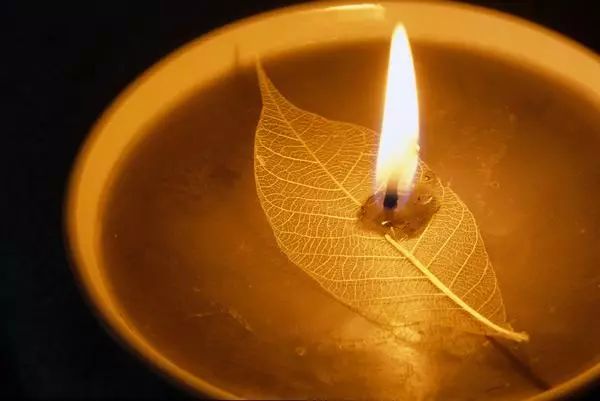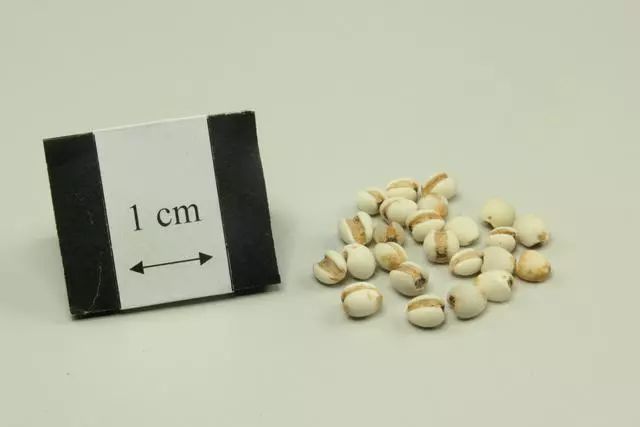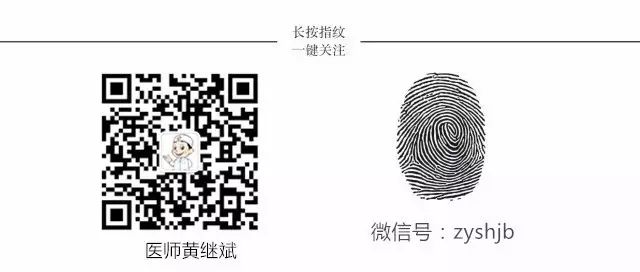What is Damp-Heat?
Damp-Heat is characterized by symptoms such as a greasy complexion, easy development of acne, bitter and dry mouth, a heavy and fatigued body, sticky and difficult bowel movements or constipation, short and yellow urine, a red tongue, a yellow and greasy tongue coating, and a slippery, soft pulse.
The formation of Damp-Heat is the result of the interaction between external and internal factors.
External factors include sitting or lying in damp areas, excessive stress, overconsumption of rich and spicy foods, indulgence in fatty and sweet foods, excessive smoking and drinking, environmental pollution, and the invasion of Damp-Heat pathogens into the body; internal factors include sluggish spleen and stomach functions, which can lead to the retention of internal dampness.
When external factors interact with the internal environment of the body, Damp-Heat can easily arise.
Individuals suffering from “Damp-Heat” feel as if they are in a foggy environment characterized by high temperature, high humidity, heavy rainfall, small temperature differences, and little or no wind. They experience discomfort, which manifests as heavy pain in the head and body, chest tightness, abdominal distension, nausea, and a thick greasy tongue coating (either white or yellow) among other symptoms.

The humid and misty environment is one of the triggers for Damp-Heat syndrome.
Why is Damp-Heat Difficult to Resolve?
Damp-Heat diseases are characterized by persistent and difficult-to-treat conditions.
Why are these diseases so persistent? This is because Damp and Heat are inherently contradictory; if you only use “Heat-clearing” methods, the Heat may lessen, but the Dampness may worsen; if you only focus on eliminating Dampness, the absence of “Damp’s restriction” may lead to an increase in Heat.
Damp-Heat is like a seesaw; when you press down on one side, the other side rises. Therefore, whether you focus solely on “clearing Heat” or just on “eliminating Dampness,” it is often ineffective.
Moreover, Heat is a Yang pathogen that easily injures Yin fluids, leading to the transformation of Damp-Heat into dryness and injuring Yin, which can cause blood movement and result in Qi loss with blood; Dampness, being a Yin pathogen, can easily damage Yang Qi, leading to spleen Yang deficiency. Thus, patients with Damp-Heat often have concurrent spleen and stomach deficiency and insufficient blood and Qi, further complicating their condition.
“Damp-Heat Disintegration: Removing Dampness to Isolate Heat” is a Classic Approach to Resolving Damp-Heat
In his work “Wen Bing Tiao Bian,” Wu Jutong discovered early on that in the face of “Damp-Heat,” “merely clearing Heat does not eliminate Dampness, and merely eliminating Dampness causes Heat to become more intense.” This issue was explored for a long time by physicians of the Ming and Qing dynasties, who ultimately developed a method known as “Damp-Heat Disintegration: Removing Dampness to Isolate Heat.”
What does “Removing Dampness to Isolate Heat” mean?
It means to disintegrate Damp-Heat by first removing the Dampness, which will gradually lead to the dissipation of Heat. Therefore, the primary method for treating such conditions is to eliminate Dampness first and then clear Heat.
Dampness itself is not a normal bodily fluid; its essence is “murky water, bad water.” Its presence obstructs the normal circulation of Qi, blood, and fluids in the body, leading to “stagnation and heat generation.” Therefore, in the case of Damp-Heat, if the patient does not have a high fever, Dampness should be eliminated first.
A similar analogy is that when you light an oil lamp, the more oil there is, the brighter the flame. Once you remove the oil, the flame goes out.

The idea of removing Heat to isolate Dampness: once the oil is removed, the Heat cannot leverage its power.
Qing dynasty warm disease scholar Wang Shixiong explained, “Heat becomes more intense with Dampness, and Damp-Heat becomes more severe with Heat. When Damp-Heat is separated, the condition is lighter and slower; when Damp-Heat is combined, the condition is heavier and faster.” Therefore, for treating Damp-Heat diseases, it is advisable to disintegrate Damp-Heat, often using diuretic and Yang-promoting herbs to eliminate Dampness and isolate Heat, allowing the Heat to self-resolve.
How to Implement the “Removing Dampness to Isolate Heat” Approach?
There is a formula that best embodies this idea. This formula does not contain any heat-clearing herbs but is a classic treatment for conditions where warm pathogens are combined with Dampness, where Dampness is heavier than Heat, and where the pathogen stagnates in the three burners, still in the Qi level and has not yet reached the Ying level. Through it, one can glimpse the essence of the “Removing Dampness to Isolate Heat” method.
This formula is Huo Po Xia Ling Tang (Ho Po and Summer Poria Decoction).
The corresponding syndrome is characterized by:
A white and greasy tongue coating, a soft and slow pulse, no thirst, and a body temperature that does not rise significantly, with increased heat in the afternoon.
It is important to note that the body temperature not rising significantly and the afternoon heat must be differentiated from Yin deficiency with internal heat, where the tongue is red with little coating and there is a sensation of heat in the five hearts, which is different from the “afternoon heat” caused by warm Damp pathogens stagnating in the three burners.
Since it is the warm Damp pathogen stagnating in the three burners, in addition to the main symptoms mentioned above, the following symptoms may also appear:
Symptoms of the upper burner: headache, dizziness, and a feeling of heaviness in the head;
Symptoms of the middle burner: chest tightness and nausea;
Symptoms of the lower burner: sticky and difficult bowel movements, and diarrhea that is not satisfying.
Since it is the warm Damp pathogen stagnating in the three burners, one should use the method of “dispersing and benefiting the upper, middle, and lower burners from Dampness, and using aromatic herbs to transform Dampness.”
Thus, Huo Po Xia Ling Tang contains three chief herbs, forming a stable “trinity.”
These three chief herbs are Xing Ren (Apricot Kernel), Bai Dou Kou (White Cardamom), and Yi Yi Ren (Job’s Tears).
Xing Ren promotes lung Qi, while Huo Xiang (Agastache) and Dou Chi (Fermented Soybean) are aromatic herbs that transform Dampness, dispersing the exterior Dampness and opening the upper burner.
Bai Dou Kou is aromatic and bitter-spicy, harmonizing the middle burner and promoting the spleen and stomach, while Ban Xia (Pinellia) and Hou Po (Magnolia Bark) can dry Dampness and promote the spleen, allowing the spleen to function properly and not be obstructed by Dampness.
Yi Yi Ren benefits the lower burner, assisted by Fu Ling (Poria), Zhu Ling (Polyporus), and Ze Xie (Alisma), which lightly drain and benefit Dampness, thus ensuring smooth water pathways and providing a route for Dampness to exit.

Yi Yi Ren is a commonly used herb for eliminating Dampness.
This formula aromatically disperses the upper burner, bitterly warms the middle burner, and lightly drains the lower burner, without using any heat-clearing herbs. Once the Dampness is expelled, the Heat will naturally diminish.
This formula effectively implements the idea of “Removing Dampness to Isolate Heat” and is worth repeated contemplation.
What Other Techniques and Methods Exist for Eliminating Damp-Heat, and What Are Their Commonalities?
In addressing Damp-Heat, both the Warm Disease School and the Cold Damage School have their own unique medication characteristics. The Warm Disease School prefers to add aromatic warming herbs, using dispersing methods, often employing Huo Xiang, Pei Lan (Eupatorium), Bai Dou Kou, Cao Guo (Tsaoko), and Cang Zhu (Atractylodes) among others, as Dampness is a Yin pathogen that cannot be transformed without warmth or aromatic properties. The Cold Damage School prefers to use herbs that promote the regulation of the “three burners’ water pathways,” such as Yue Bi Tang (Yue Bi Decoction) and Yue Bi Jia Zhu Tang (Yue Bi Decoction with Atractylodes), which use Sheng Jiang (Fresh Ginger) to promote the internal generation of stomach Qi; Ma Huang (Ephedra), Shi Gao (Gypsum), and Bai Zhu (Atractylodes) to promote the return of muscle fluids, pushing the Dampness through the heart, small intestine, and bladder pathways.
Additionally, Qing dynasty warm disease scholar Ye Tian Shi, author of “Wen Re Lun,” also had his own approach to resolving Damp-Heat, which is the “promoting Yang” method.
Ye Tian Shi pointed out that “when Dampness prevails, Yang is weak,” meaning that when Dampness is rampant, Yang Qi will weaken. However, there is a process from “constrained Yang” to “exhausted Yang,” meaning that initially, “Yang Qi does not diminish,” it is merely “constrained”; later, Yang Qi not only becomes constrained but also becomes weak due to “exhaustion.”
However, the root cause is “constraining,” not “Yang deficiency”; thus, simply tonifying Yang is ineffective at this stage.
The key is to promote the smooth flow of Qi, allowing Yang not to be constrained, thus resolving the issue of “exhausted Yang.”

Opening windows to let in sunlight and wind is the best way to eliminate Dampness.
The key to promoting Yang is to regulate the flow of Qi. To do this, one can use Xiang Ru (Elsholtzia), Huo Xiang, Bo He (Mint), Da Dou Huang Juan (Soybean Sprouts), and Pei Lan to disperse the exterior; one can also add Jie Geng (Platycodon), Zi Su Ye (Perilla Leaf), and Bai Zhi (Angelica) to promote lung Qi and move Qi. Another key aspect is to “guide Dampness out.”
The fastest way to “guide Dampness out” is to promote urination; hence, it is said that “promoting Yang is not about warming, but about promoting urination.” Common herbs for promoting urination include Fu Ling, Zhu Ling, Tong Cao (Rice Paper Plant), Yi Yi Ren, Da Fu Pi (Trichosanthes), and Ze Xie. However, one should not promote urination for the sake of urination; the goal is to ensure smooth urination and the flow of Qi, so it should be done appropriately.
Sometimes, patients may have both fluid damage and Dampness; these two conditions are not contradictory because the presence of bad water (Dampness) obstructs the flow of good water (fluids). Therefore, while eliminating Dampness, one can also add herbs like Lu Gen (Reed Rhizome) and Bai Mao Gen (Imperata) to generate fluids and promote urination without contributing to Dampness.
However, all these approaches ultimately converge; regardless of the methods mentioned above, whether it is “Removing Dampness to Isolate Heat,” “regulating the three burners,” or “dispersing methods,” their essence is to provide an outlet for “Dampness” rather than merely “eliminating Dampness or clearing Heat.”
In simpler terms, it is about ensuring ventilation, allowing the wind to blow in, and facilitating the flow of Qi to achieve the goal of Qi circulation and Dampness transformation.


